News, views and insights on maintaining a healthy edge.
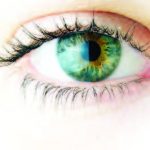 In the Blink of an Eye
In the Blink of an Eye
High-powered blue handheld lasers—which some parents purchased for their children this past holiday season—are anything but toys. So powerful is the light from these devices that the normal blink reflex isn’t quick enough to prevent damage when they hit the human eye. Blue laser pointers resemble lower-wattage red and green laser pointers, but can cause much more severe retinal damage in just a fraction of a second—including hemorrhaging in multiple retinal layers, macular pucker and a retinal cavity. Ouch! A recent study in Ophthalmology stated that the lack of public knowledge about blue handheld lasers could lead to an “epidemic of ocular injuries” and called for government intervention.
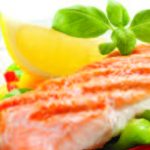 Eating Away the Blues
Eating Away the Blues
While newspapers and magazines are full of stories about “holiday blues,” you don’t hear much about the sadness and mild depression that can kick in after the wind-down of endless parties and presents. In many cases, the problem is related to extra pounds we pack on in December and January. The good news is that healthy eating in February and March can not only help you shed that weight, it can also improve your mental well-being. For example, study after study has shown that adding foods rich in Omega-3 fatty acids can be effective in staving off depression. These foods include salmon and tuna, dark leafy vegetables, nuts and flaxseed. Fish (along with low-fat dairy foods) can also boost your mood by boosting your B12 levels. There is also growing evidence that a diet high in selenium can improve mild depression. Fish, nuts, lean meats, beans and whole grains are rich in selenium. Some other rules for avoiding diet-related moods swings include eating a healthy breakfast every day, drinking plenty of water and consuming a healthy snack or small meal every four hours or so for sustained energy.
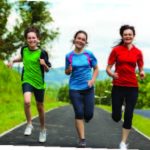 16 Going on 17
16 Going on 17
How much exercise is too much exercise? For teenagers, this question almost seems superfluous. Study after study shows that kids simply aren’t active enough. According to sports medicine authority Dr. Michele Gilsenan, by mid-teens, when participation should be high, the opposite occurs and sedentary living becomes the norm for many teenagers. As reported in the Archives of Disease in Childhood, seven hours a week is the recommended “dosage” of sports for most teens; for kids on teams, an average 14 hours delivers the maximum benefit in terms of fitness and proficiency in a sport. However, 17 hours is the tipping point at which strenuous activity becomes detrimental for athletic teenagers. Once that 17 hour maximum is reached, the benefits of sports participation, including improved self-esteem and mental acuity and the reduced risk of depression, appear to diminish. In fact, researchers from the Institute of Social and Preventive Medicine in Switzerland found the risk of depression, irritability and anxiety actually starts to increase. “As young athletes frequently choose a single sport that they play year-round, overuse of the same muscles occurs,”

Michele Gilsenan, DO
Member, Family Medicine Department 732.388.7300
Dr.Gilsenan observes. “In general, early burnout from the sport or physical activity occurs. As a result, we’re seeing a type of injury in younger athletes that was once reserved for those older. Also, with too much sports activity, there is the possibility of reduced concentration, which can lead to potential injuries, too.”
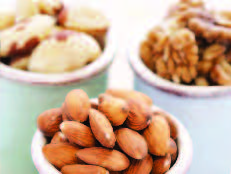 Nuts to You
Nuts to You
A study published in the New England Journal of Medicine this winter reached the startling conclusion that people who eat a handful of nuts every day have a lower mortality rate by 20 percent compared to those who do not eat nuts at all. That statistic covers death from all causes, but the study pointed specifically to significant differences in death due to heart diseases, cancer and respiratory illnesses. This news is exciting because it involves a relatively simple, un-dramatic lifestyle change. “Nuts contain unsaturated fatty acids, the good fatty acids. They help lower bad cholesterol, the low density lipoprotein (LDL), which is linked to the hardening of coronary arteries that can lead to heart attacks,” asserts

Fayez Shamoon, MD Director, Cardiovascular Services 973.877.5160
Fayez Shamoon, MD, Director of Cardiovascular Services at Trinitas. “Nuts, especially walnuts, hazelnuts, almonds, and peanuts, as recently shown, are also rich in fiber and are an extremely beneficial part of a heart-healthy diet as suggested in a July 2003 Food and Drug Administration (FDA) statement.” The New England Journal reporting further found that nut-eaters were more likely to consume fruits and vegetables, be non-smokers, and get a decent amount of exercise. These links may have something to do with the fact that nuts quell hunger pangs between meals compared to less nutritious snack foods. In a nutshell, Dr. Shamoon adds that eating one to two ounces of nuts daily is highly recommended.
 Vacation Souvenir
Vacation Souvenir
The growing popularity of “nip-and-tuck tourism”—the blending of a tropical vacation with lower-cost cosmetic surgery procedures—is not without risk. In Boston this past fall, hospitals reported several cases of Mycobacterium abscessus infection, involving bacteria that are particularly stubborn when it comes to antibiotics. When doctors looked for a common vector, they found that the patients had undergone cosmetic surgery while vacationing in the Dominican Republic over the summer. Soon, they found that hospitals in New York, Connecticut and other states were reporting similar cases. Mycobacterium abscessus is spread by contaminated medical equipment and supplies, and bad surgical technique, but doesn’t show up until many weeks later. Fortunately, the infection is not contagious. A word to the wise from Board Certified plastic surgeon

Joseph D. Alkon, MD Chief, Plastic Surgery 908.583.5630
Joseph D. Alkon, Chief of Plastic Surgery at Trinitas: “When considering aesthetic plastic surgery, or any type of plastic surgery for that matter, it is important to seek out a board-certified plastic surgeon who is trained and experienced in your desired procedure. Verify the training and credentials of the physician who will be performing your surgery and the certification of the facility where your surgery will be performed. An excellent resource for this is the American Board of Plastic Surgery’s website, www.abplsurg.org. If your physician is not listed here, yet claims to be ‘board-certified,’ then that should serve as a warning and prompt you to ask specific questions about their credentials and training, and their ability to perform your plastic surgery safely.”
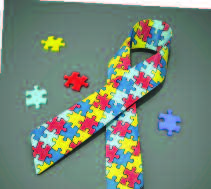 Autism Breakthrough at Yale
Autism Breakthrough at Yale
Research published in late 2013 by the Yale Child Study Center shows promise for oxytocin (OT)—aka the “love hormone”—in the treatment of autism. Areas of the brain governing social functions such as empathy and reward had greater activity after subjects were given an inhaler spray of oxytocin. The effects were temporary and the number of subjects (17) in the study small, but the really encouraging news may be that the brain regions involved in autism may not be irrevocably damaged. Another interesting finding in the Yale study was that children whose saliva had higher levels of oxytocin exhibited more activity in the amygdala, the part of the brain that plays an important role in the processing of emotions. “This encouraging study at Yale challenges what we know about treatment being effective in children only when given by three years of age,” asserts

Romulo Aromin, Jr., MD
Medical Director, Child/Adolescent Partial Hospital Programs 908.994.7028
Romulo Aromin, Jr., MD, Medical Director of Child/Adolescent Partial Hospital Programs at Trinitas. “Children and adolescents with Autism Spectrum Disorders may still be responsive to medication and may still be malleable more than what we thought. Currently, Applied Behavioral Analysis (ABA) has been the evidence-based treatment recommended during this window period. Without such treatment, prognosis will be adversely affected. This study opens utilizing occupational therapy and Applied Behavioral Analysis as intervention arms.”





